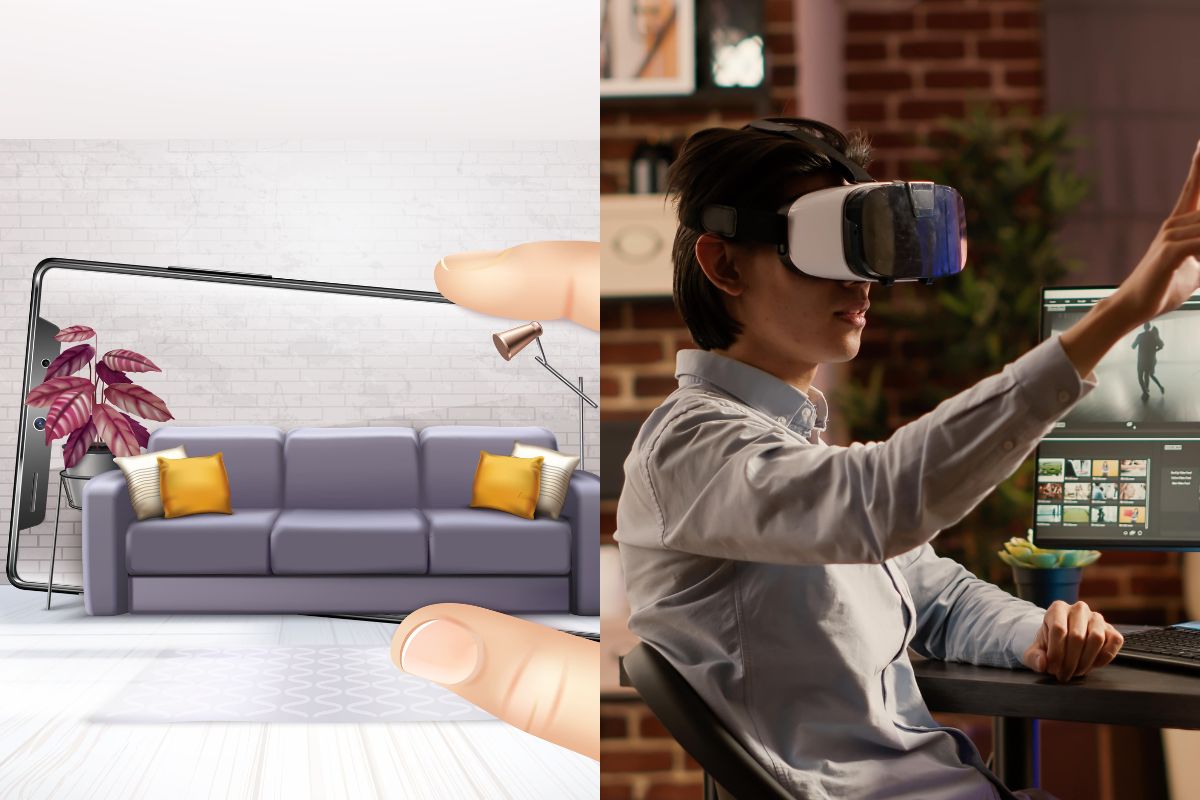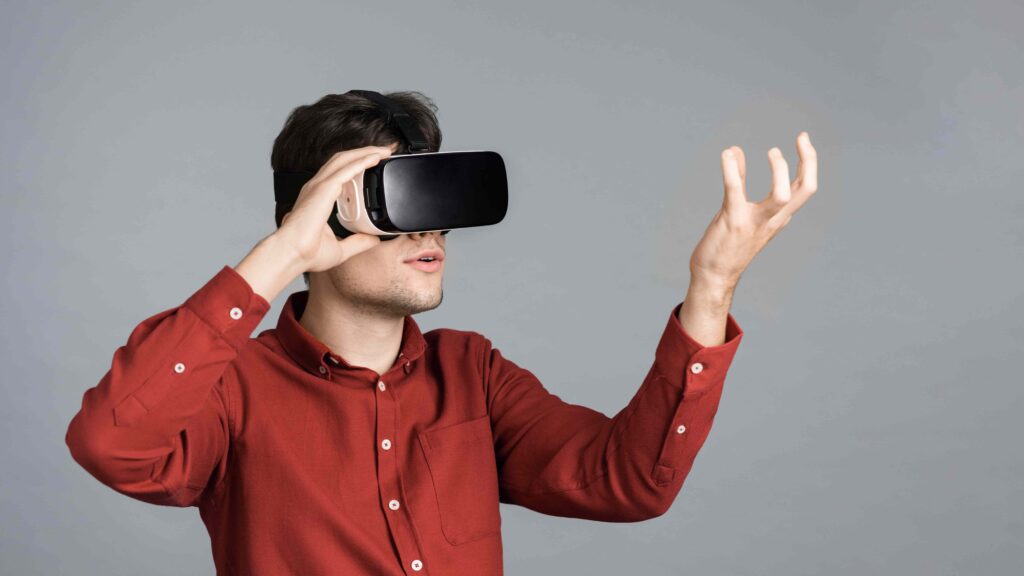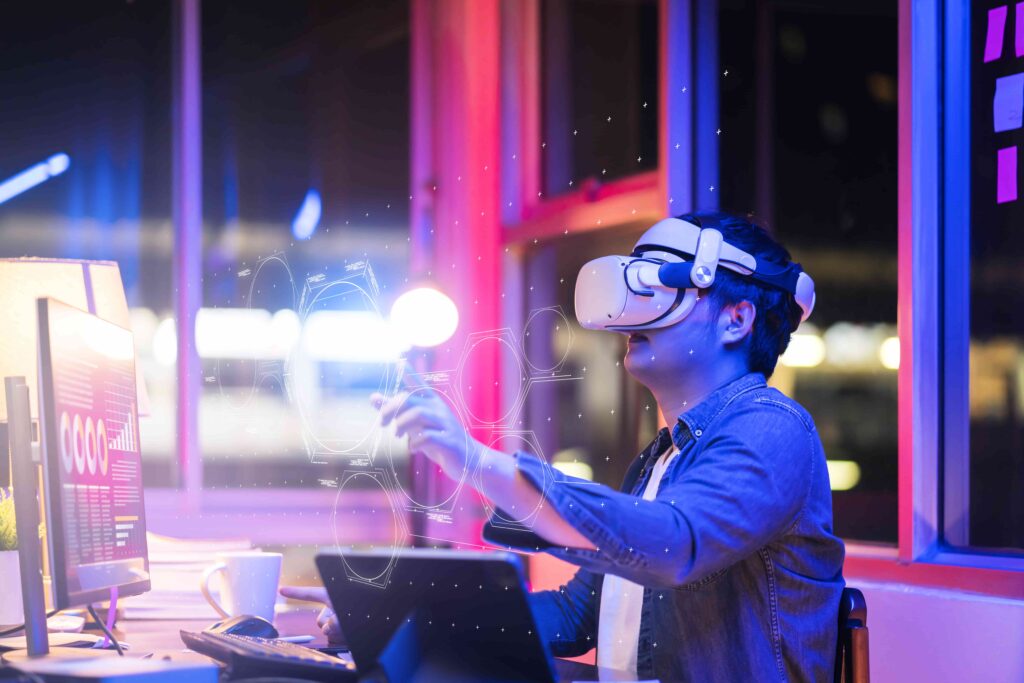The Future of Mobile Development with AR and VR App Development: Trends, Challenges, and Best Practices

Introduction
The world of mobile app development is constantly evolving, and the integration of Augmented Reality (AR) and Virtual Reality (VR) technologies has opened up new opportunities for enhancing the user experience. AR and VR have the potential to revolutionize the way people interact with digital content and can provide a more immersive and engaging experience for users. In this blog post, we will explore the future of mobile development with AR and VR app development, including the advantages and challenges of using these technologies, and the future trends to look out for.
AR and VR Technology
AR and VR technology have come a long way since their inception and have been widely adopted across various industries. AR technology enhances the real-world environment by adding virtual elements to it, while VR technology creates a completely simulated environment.
Historical Background and Evolution
AR and VR have been in development for several decades, but it wasn’t until the widespread adoption of smartphones that these technologies became more accessible to the general public. Today, AR and VR are used in a wide range of industries, from gaming and entertainment to education and healthcare.
Differences between AR and VR
AR adds virtual elements to the real world, while VR creates a completely simulated environment. AR can be experienced through a smartphone camera or dedicated AR devices, while VR requires a headset or other specialized hardware.
Applications of AR and VR in various industries
AR and VR have been applied to a wide range of industries, including gaming, education, healthcare, and marketing. In the gaming industry, VR offers a completely immersive gaming experience, while AR enhances the real-world experience by adding virtual elements. In the education and healthcare industries, AR and VR can be used to create interactive and engaging learning experiences, and can also be used to simulate surgeries and other medical procedures.
Advantages of AR and VR App Development
Enhanced User Experience
AR and VR app development offers a more immersive and engaging experience for users, providing a sense of presence in a virtual environment. This can lead to a more enjoyable and memorable experience for users.
Improved Engagement
AR and VR can be used to create interactive and engaging experiences that encourage users to actively participate and engage with digital content.
Increased Accessibility
AR and VR can provide a more accessible and inclusive experience for users, including those with disabilities. For example, AR can be used to provide audio and visual cues to assist with navigation, while VR can provide a completely simulated environment for users with mobility limitations.
Better User Interaction
AR and VR can be used to create a more natural and intuitive interaction between users and digital content. This can include gestures, voice commands, and other forms of input.
Enhanced User Immersion
AR and VR can provide a more immersive experience for users, allowing them to feel as though they are truly a part of a virtual environment. This can lead to a greater sense of presence and a more memorable experience.
Future Trends in AR and VR App Development

5G Integration
The widespread adoption of 5G networks is expected to greatly enhance the performance and capabilities of AR and VR technologies. With faster speeds and lower latency, AR and VR experiences can become even more immersive and engaging.
Cross-Platform Development
As AR and VR technologies continue to evolve, it is likely that we will see a greater emphasis on cross-platform development, allowing AR and VR experiences to be enjoyed on a variety of devices and platforms.
Increased Use of AI and Machine Learning
AI and machine learning technologies are expected to play an increasingly important role in AR and VR development, allowing for more personalized and adaptive experiences.
Growth of XR (Extended Reality) Ecosystems
The distinction between AR and VR is expected to become less clear as XR (Extended Reality) technologies continue to evolve and integrate. XR is an umbrella term that encompasses AR, VR, and other similar technologies.
Open AR and VR App development
Open AR and VR platforms are expected to become more widely adopted, allowing developers to create AR and VR experiences that can be used and shared across a variety of devices and platforms.
Challenges in AR and VR Mobile Development
Technical Limitations
AR and VR technologies are still in their early stages of development and are subject to a range of technical limitations, including hardware constraints, limited battery life, and the need for specialized hardware.
Interoperability Issues
AR and VR experiences often require the use of multiple devices and platforms, and there are still significant challenges related to ensuring interoperability between these different systems.
User Adoption
AR and VR technologies are still relatively new and are not yet widely adopted by the general public. This can pose a challenge for developers and businesses looking to create and monetize AR and VR experiences.
Privacy and Security Concerns
AR and VR technologies have the potential to collect and use sensitive user data, and there are significant privacy and security concerns that need to be addressed to ensure that these technologies are used in a responsible and secure manner.
Unleash the Power of AR and VR with Xminds: Your Trusted Partner in AR and VR app development

At Xminds, we’re dedicated to driving innovation and growth in the world of AR and VR. We believe in the limitless potential of these technologies, and we’re committed to helping you make the most of them. If you’re looking for a development partner who can help you unleash the full potential of AR and VR, look no further than Xminds. Get in touch with us today to learn more about how we can help you shape the future of mobile development.
With our deep understanding of the latest AR and VR technologies, we’ll help you navigate the challenges and opportunities of this rapidly evolving field. From design to development, we’ll work closely with you to create a solution that meets your unique needs and goals. And with our focus on user experience, you can be sure that your AR or VR experience will be accessible, engaging, and fun for users.
Conclusion
The future of mobile development is closely tied to the growth and development of AR and VR technologies. AR and VR have the potential to revolutionize the way we interact with technology and the world around us, and they offer a wide range of opportunities for innovation and growth. However, there are also significant challenges associated with AR and VR app development, including technical limitations, interoperability issues, user adoption, privacy and security concerns, and content creation.
In order to succeed in the world of AR and VR mobile development, it is important to stay up to date on the latest technological advancements and best practices embrace cross-platform development and focuses on the user experience. By doing so, developers and businesses can create engaging and accessible AR and VR experiences that will drive the future of mobile development.
Related articles



